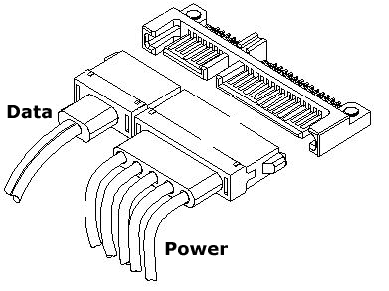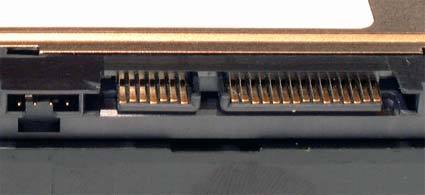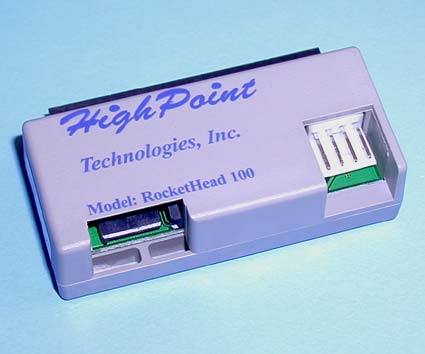Serial ATA Is Here: Seagate Barracuda ATA V and Five of the Latest Controllers Reviewed
Serial ATA In Detail
The working principles of Serial ATA are quickly explained. It follows in the footsteps of many other technologies that have used serial transmission to achieve high data transfer rates - Ethernet, USB, and FireWire, for example.
This photo clearly shows that there are only four wires from the controller chip to the plug.
Conventional ATA uses a large number of wires (40 to be exact) to achieve parallel transmission. The wide cable and plugs are mechanically cumbersome, and there are also a number of electrical limitations. Serial ATA requires two pairs of high frequency cables working at a low voltage. These compact cables are very easy to connect and do not block airflow through the interior of the case. Moreover, the connection limitations of parallel ATA - with its system of master and slave drives - are a thing of the past.
Another view, this time from below: on the right, the power connector; on the left, the data connector.
One of the most important features contributing to the success of Serial ATA is its backwards compatibility with Ultra ATA. It is particularly interesting that the current crop of Serial ATA controllers works fine with conventional UltraATA/133 hard disks (or older). Not only are there motherboards available with Serial ATA and Ultra ATA/133 connectors, there are also standalone Serial ATA controllers on the market that use adapters to work with conventional ATA drives.
The downside of the conversion is a performance hit. Although we will not see chipsets with integrated Serial PTA controllers until the spring, many of the current models lose a major portion of their potential performance when required to convert from parallel to serial transmission (see the Benchmarks section). Fortunately, this doesn't matter too much in practice, as the remaining bandwidth is still sufficient to handle the throughput of today's hard drives.
The choice of controller has a significant influence on the maximum overall performance. Although this factor is not particularly significant in a system with a single hard drive, with a small RAID set-up using two or more drives, some controllers quickly reach their limits.
Get Tom's Hardware's best news and in-depth reviews, straight to your inbox.
Use an adapter like this one (supplied with the various HighPoint controllers) to connect your UltraATA hard drives to a Serial ATA controller.
Current page: Serial ATA In Detail
Prev Page Introduction Next Page Outlook: The Future Of Serial ATA
Patrick Schmid was the editor-in-chief for Tom's Hardware from 2005 to 2006. He wrote numerous articles on a wide range of hardware topics, including storage, CPUs, and system builds.



